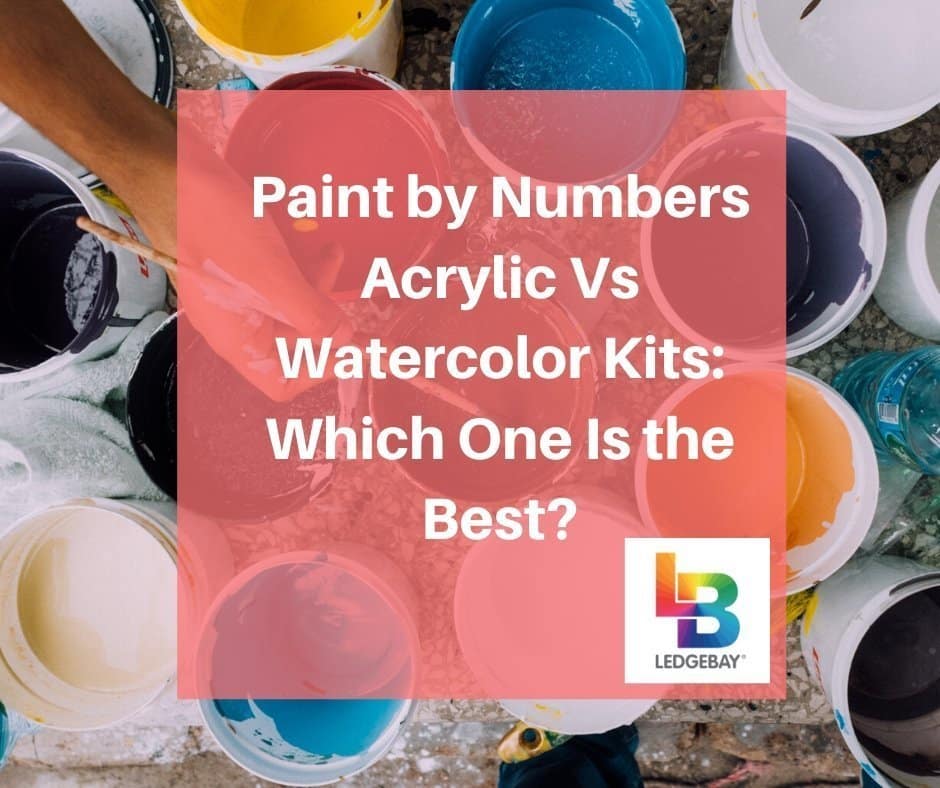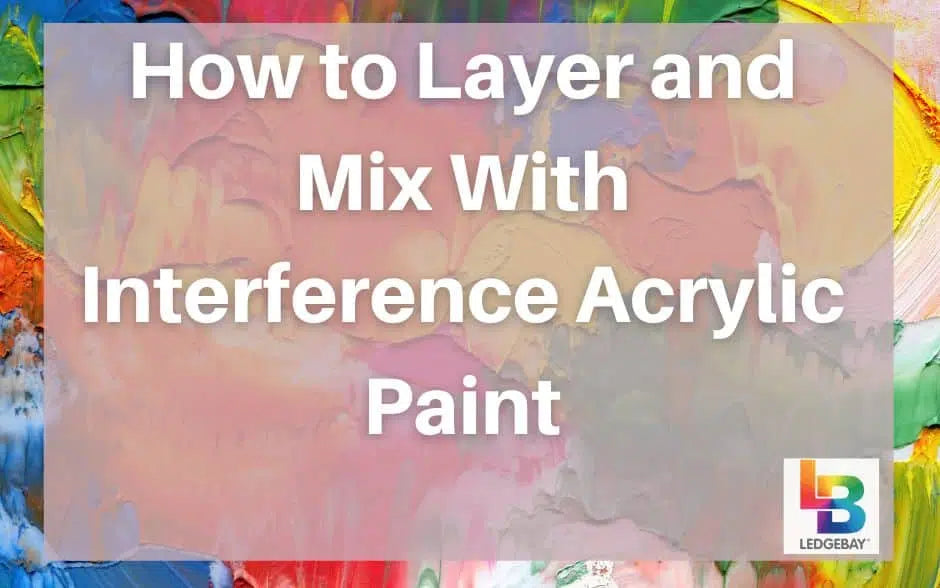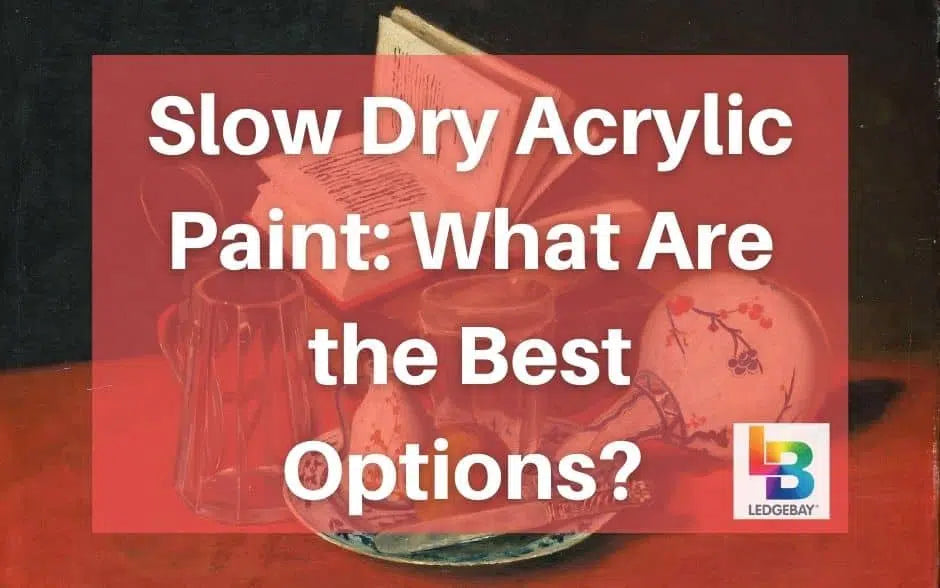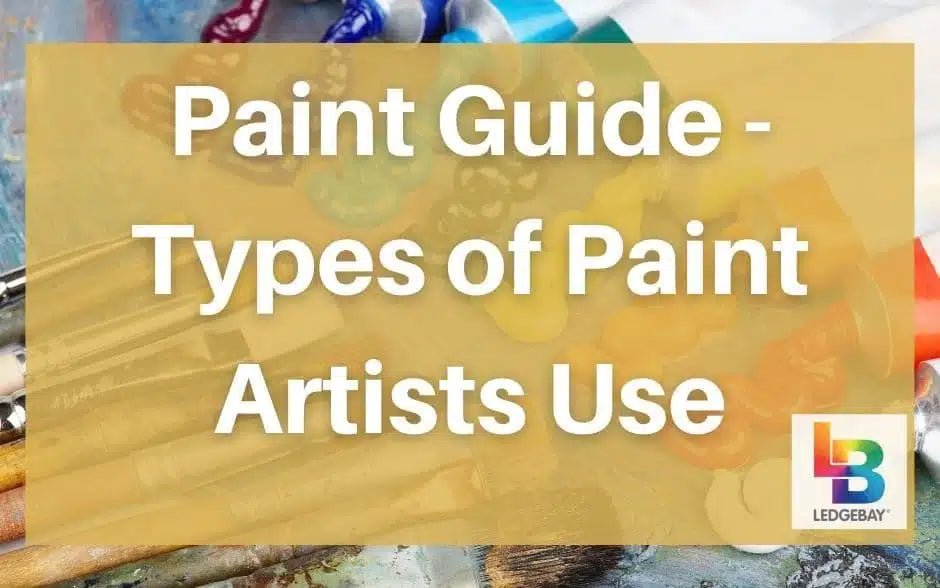We going to look atpaint by numbers acrylic vs watercolor paints. There are always so many questions surrounding these two mediums.
Can youuse acrylic paint as watercolors ? Is it easier topaint with watercolor or acrylic ? Are there any similarities between watercolor andacrylic painting ?
Since you're here, it's only right that I give you answers to these questions. So let's get right to it, shall we?
Even before we get to the specifics, the first thing to keep in mind is that both acrylic and watercolor produce great art. Sure, they requiredifferent art techniques , but in the end your artwork will look good regardless of the medium.
That said, there are certain situations when you would rather have acrylic than watercolor or vice versa. We're going to look at those situations later on, so read on to find out.
It's not likeoil paint where you have to use white spirit or turpentine to clean or thin. White spirit and turpentine are flammable, which makes them fire hazards, especially to kids.
That's not the case withacrylic and watercolors ; they are absolutely safe for your little painters. So, if you're buying apaint by numbers kit for kids, you may want to consider shopping in theacrylic and watercolors sections.
In case you're curious about how oil compares with acrylic, you can read all about thathere .
Watercolors are known for their magical ability tocreate masterpieces after wet-on-wet painting . Just make sure the surface is moist, otherwise it will suck up the first layer dry before you apply the second.
You can achieve the same results when you use acrylics thinly. Again, you'll need to wet the surface first.
Granted, you won't have to mixcolors when painting by numbers , but this is a technique worth mentioning anyway. If you're usingpaint by numbers as a gateway to painting, it won't hurt to try a little wet-on-wet with your design. You can borrow morepaint by numbers tips here.
Watercolors are natural. They're made by suspending pigment in gum Arabic. Acrylics, on the other hand, are man-made. They are made by suspending pigment in an acrylic resin. Just in case you didn't know, there are at least5 types of acrylic paints .
Why is construction important in this context? Because it influences the final artwork. Generally speaking, watercolors have more water content in them thanacrylic paints . For that reason, they are more transparent.
If you want a piece of art that will let light pass through the canvas then watercolor is your paint. Acrylics are not the opaquest but will still prevent most of the light from passing through the canvas. You canadd more layers to make acrylic opaquer than it already is.
[amazon box="B07RS29DRY"]
Nonetheless, both mediums produce vibrant artwork. They are great for brightlycolored paintings . So, if the photo in yourpaint by numbers kit has a lively combination of colors, either of these paints will do.
Not that you won't be able to do it completely, just that it will take more effort. The colors usually lift easily and that makes it almost impossible to layer.
[amazon box="B072FVQNWM"]
That's to say, if you're making apaint by numbers acrylic vs watercolor choice, look at the surface that comes with the kit. If they have put a watercolorpaint with a canvas surface, they're giving you a big challenge.
But if it's watercolorpaint and a paper surface, you'll have a blast painting. Same goes foracrylic paint and canvas.
In watercolors it's the opposite; you start with light colors and then finish with the dark ones. That's because it's a very transparent medium, which makes it hard to hide an underlying dark layer. But it's possible to cover the underlying layer if it's lighter than the overlaying one.
Asthis page explains, the transparency of watercolors is the reason why you can't cover up mistakes when you're using them. You kinda have to get it right the first time.
If you're not feeling so confident about yourpaint by numbers skills, you could consider starting with acrylic paint. It will allow you to build up layers when you make a mistake.
For example, if you place a dark color in a wrong spot, you can overlay it with a lighter color. The top layer will effectively cover the bottom one, especially if you don't think thepaint .
Acrylic paintings , on the other hand, last for centuries. You won't even have to do anything apart from occasionally dusting the artwork. It's the perfect choice if you want to create artwork that will last for generations.
If you're new, acrylic seems like the ideal choice because you can correct mistakes and learn faster. Watercolor may frustrate you.
That's by no means a vilification of watercolors in thispaint by numbers acrylic vswatercolor guide. It simply means that some situations call foracrylic paint while others are more suited for watercolor painting.
I wouldn't say there's a definitive recommendation forpaint by numbers acrylic vs watercolor kits . But if you're just beginning, try using acrylic first and then switch to watercolor later. You'll be amazed at how different these two mediums are even though they're both capable of producingeye-pleasing artwork.
Can youuse acrylic paint as watercolors ? Is it easier topaint with watercolor or acrylic ? Are there any similarities between watercolor andacrylic painting ?
Since you're here, it's only right that I give you answers to these questions. So let's get right to it, shall we?
Acrylic Vs Watercolor Painting: The Similarities
[amazon box="B009JU6SP8"]Even before we get to the specifics, the first thing to keep in mind is that both acrylic and watercolor produce great art. Sure, they requiredifferent art techniques , but in the end your artwork will look good regardless of the medium.
That said, there are certain situations when you would rather have acrylic than watercolor or vice versa. We're going to look at those situations later on, so read on to find out.
Water-solubility
The biggest similarity betweenacrylic and watercolor is that they are water-solublepaints . You can use water to thin them when need be. That also means you don't need some special liquid to rinse your brushes during and after painting sessions.It's not likeoil paint where you have to use white spirit or turpentine to clean or thin. White spirit and turpentine are flammable, which makes them fire hazards, especially to kids.
That's not the case withacrylic and watercolors ; they are absolutely safe for your little painters. So, if you're buying apaint by numbers kit for kids, you may want to consider shopping in theacrylic and watercolors sections.
In case you're curious about how oil compares with acrylic, you can read all about thathere .
Wet-on-wet painting
One commontechnique in paint by numbers acrylic vs watercolor is wet-on-wet painting. Also known as alla prima, wet-on-wet involves applying a layer of wet paint on a previously applied layer of wet paint. The two layers will dry together and create anice, soft and spontaneous effect .Watercolors are known for their magical ability tocreate masterpieces after wet-on-wet painting . Just make sure the surface is moist, otherwise it will suck up the first layer dry before you apply the second.
You can achieve the same results when you use acrylics thinly. Again, you'll need to wet the surface first.
Granted, you won't have to mixcolors when painting by numbers , but this is a technique worth mentioning anyway. If you're usingpaint by numbers as a gateway to painting, it won't hurt to try a little wet-on-wet with your design. You can borrow morepaint by numbers tips here.
Paint by Numbers Acrylic Vs Watercolor: The Differences
Construction
It's impossible to discusspaint by numbers acrylic vs watercolor without talking about their creation. While they're both water-soluble, there are some profound differences in how they're constructed.Watercolors are natural. They're made by suspending pigment in gum Arabic. Acrylics, on the other hand, are man-made. They are made by suspending pigment in an acrylic resin. Just in case you didn't know, there are at least5 types of acrylic paints .
Why is construction important in this context? Because it influences the final artwork. Generally speaking, watercolors have more water content in them thanacrylic paints . For that reason, they are more transparent.
If you want a piece of art that will let light pass through the canvas then watercolor is your paint. Acrylics are not the opaquest but will still prevent most of the light from passing through the canvas. You canadd more layers to make acrylic opaquer than it already is.
[amazon box="B07RS29DRY"]
Nonetheless, both mediums produce vibrant artwork. They are great for brightlycolored paintings . So, if the photo in yourpaint by numbers kit has a lively combination of colors, either of these paints will do.
Painting Surface
It's always easier topaint acrylics on canvas and paper. Watercolor, on its part, is made for paper. It's a bit tricky to use it on canvas.Not that you won't be able to do it completely, just that it will take more effort. The colors usually lift easily and that makes it almost impossible to layer.
[amazon box="B072FVQNWM"]
That's to say, if you're making apaint by numbers acrylic vs watercolor choice, look at the surface that comes with the kit. If they have put a watercolorpaint with a canvas surface, they're giving you a big challenge.
But if it's watercolorpaint and a paper surface, you'll have a blast painting. Same goes foracrylic paint and canvas.
Techniques
The techniques required inpaint by numbers acrylic vs watercolor often differ, at times widely. For example, the rule of thumb whenpainting with acrylics is to start with the dark colors as you work to the light ones. This is known as dark to light painting.In watercolors it's the opposite; you start with light colors and then finish with the dark ones. That's because it's a very transparent medium, which makes it hard to hide an underlying dark layer. But it's possible to cover the underlying layer if it's lighter than the overlaying one.
Asthis page explains, the transparency of watercolors is the reason why you can't cover up mistakes when you're using them. You kinda have to get it right the first time.
If you're not feeling so confident about yourpaint by numbers skills, you could consider starting with acrylic paint. It will allow you to build up layers when you make a mistake.
For example, if you place a dark color in a wrong spot, you can overlay it with a lighter color. The top layer will effectively cover the bottom one, especially if you don't think thepaint .
Durability of artwork
The durability of artwork depends on many factors, including temperature, humidity and light. Nevertheless,acrylic paintings generally last longer than watercolors. The latter will start to fade after a few years unless stored under museum conditions.Acrylic paintings , on the other hand, last for centuries. You won't even have to do anything apart from occasionally dusting the artwork. It's the perfect choice if you want to create artwork that will last for generations.
Recommendation: acrylic vs watercolor paint by numbers, which one should you choose?
Just to emphasize this: both mediums are capable of producing high-quality artwork. It all comes down to your mastery ofpaint by numbers .If you're new, acrylic seems like the ideal choice because you can correct mistakes and learn faster. Watercolor may frustrate you.
That's by no means a vilification of watercolors in thispaint by numbers acrylic vswatercolor guide. It simply means that some situations call foracrylic paint while others are more suited for watercolor painting.
When to Use Acrylic Paint by Numbers
- When used outdoors (in the sunlight), acrylic dries surprisingly fast; faster than watercolor. That may be an issue of concern because paint my dry on the brush before you lay it on the canvas. So, acrylic is not the ideal choice for outdoor painting sessions. Use it when you're indoors.
- It makes sense to choose acrylic if you're still learning how to paint by numbers. Acrylics come in varying viscosities. If it's thick, it will take some time to dry and you can correct mistakes either by painting over or scraping away any unwanted parts. More on acrylic's viscosity here.
- Choose acrylic if you want to paint on a canvas or paper. It gives you both options. Regardless of the surface, it lasts for centuries. That makes it ideal for artwork that needs to last for a very long time.
- Finally, if you're an expert at dark to light painting, then you definitely want to go with acrylic paint. Watercolor will force you to do the opposite; i.e. paint from light to dark.
When to Use Watercolor Paint by Numbers
- It's recommended that you use watercolor if you've mastered acrylic and are looking for a challenge. The fact that it gives little to no room for mistake makes it great for experienced painters.
- If you prefer to take your painting sessions outdoors, you may want to pick watercolor as your painting by numbers paint. It won't dry while still on the brush, even when the sun is hot. But it will dry instantly when it hits the surface.
- Watercolors are ideal for painters who prefer light to dark painting. If you often find yourself prioritizing light colors in a paint by numbers design, then you'll love the light to dark technique. And you'll definitely enjoy using watercolor.
- As mentioned, this medium should be used on paper for a pleasant experience (not canvas). So if the surface in a paint by numbers kit is paper, you may consider combining it with watercolors.
Pros and Cons of Acrylic and Watercolor Paint by Numbers
The Pros
Acrylic and Watercolor
- Excellent for beginners
- Dries quickly. You can complete a paint by numbers project very fast
- Mistakes are easy to correct
- Transparent in nature, which means it produces bright artwork
- Easy to clean
- Uses paper, which makes it perfect for people who paint in books
- Most durable painting medium. Artwork lasts for centuries
- Doesn't require any mediums except water
- Creates depth and shadows easily when used thick
- Easy clean up
- Doesn't fade with time
- Shifts color after drying. This can lead to awesome hues
The Cons
Acrylic and Watercolor
- Prone to color shifting which could change the intended color pattern
- Mistakes can't be corrected
- Dries too quickly
- Painting light to dark can be daunting
- Prone to moisture damage
Final Thoughts
At the end of the day,artists always choose the type of paint they are most comfortable with. And that's precisely what you should do -choose the paint that you like the most.I wouldn't say there's a definitive recommendation forpaint by numbers acrylic vs watercolor kits . But if you're just beginning, try using acrylic first and then switch to watercolor later. You'll be amazed at how different these two mediums are even though they're both capable of producingeye-pleasing artwork.











